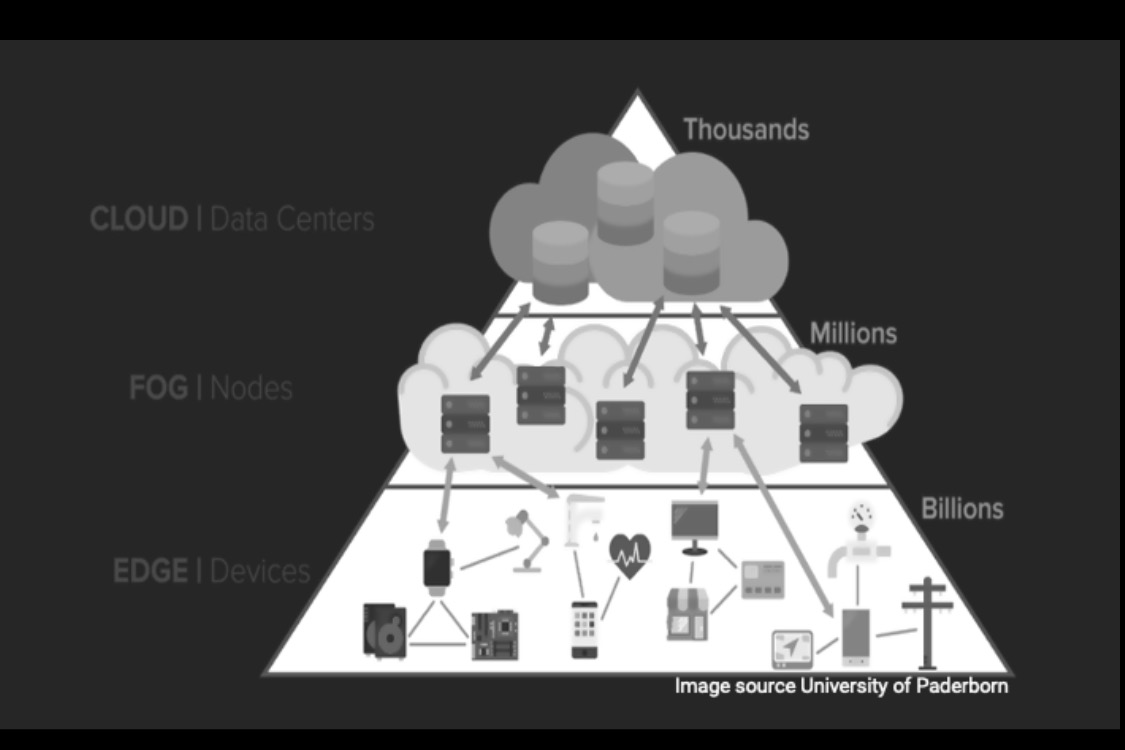"Edge Computing refers to on the device closer to where the data is generated at the edge of the network. We'll see AI increasingly inferencing on the devices around us including mobile devices, sensors and smart cameras with Graphical Processing Units (GPUs, or specialised AI chips for sake of simplicity) embedded in the device. Indeed it is interesting to wonder where NVIDIA (arguably the world leader in GPUs) will go next following the acquisition of ARM for $40 billion. Counterpoint Research forecast that the number of mobile devices with GPUs (or AI Chips) will increase from 190 million in 2019 to 1.25 billion by the end of 2022, accounting for 3 out of 4 mobile devices.
The growth of the Edge does not mean that the Cloud will disappear. Rather in the next few years we are likely to continue to witness the growth of the hybrid model whereby Machine Learning and Deep Learning algorithms will be trained on the Cloud and inference on the Edge. It may also be that some firms will use a Cloud server as a data lake for historical datasets rather than store vast sets of data locally.
Currently it is common practice for Machine Learning and Deep Learning algorithms to reside on a remote cloud server where the big data sets are stored. Increasingly Machine Learning and Deep Learning will be operating on your mobile phone, or smart sensor devices around us.
The Role of 5G
As we transition across to 5G the key benefits include significant enhancements in speed, latency, and connectivity. The types of 5G include low-band, mid-band and high-band.
5G is significantly faster than 4G with reported times of up to 100 times faster than 4G albeit such speeds may have to await standalone 5G networks with millimeter wavelength (mmWave) infrastructure for high-band 5G. Current 5G services on non-standalone dedicated 5G networks are reported to be between 10 to 20 times faster than 4G. The relative gain in speed will depend upon the type of 5G that is available in the local area to the user.
Jeremy Horwitz authored the definitive guide to 5G low, mid and high-band speeds in VentureBeat and reported that "T-Mobile’s low-band 5G peaks at somewhere in the neighborhood of 225 megabits per second (Mbps), which is six to seven times faster than common 4G speeds in the United States today. With a 600MHz signal it is also able to pierce windows and walls."
The same article in VentureBeat also observed that "tests of the first Sprint mid-band 5G phone peaked at 480Mbps, but more commonly fell in the 125-200Mbps range — an average around as fast as low-band 5G at its best, with the prospect of reaching 600-700Mbps peaks in some markets."..."
Lire la suite
Where is Artificial Intelligence (AI) Going in 2021?
BBNTIMES, 02/08/2021
Partagé par :
Beesens TEAM











